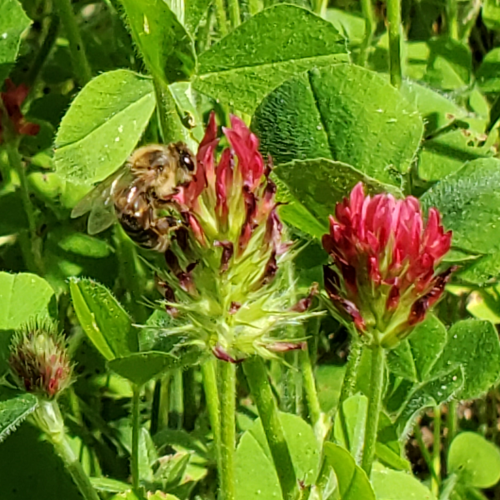- Name
- Clover, Crimson Clover
- Common Names
- scarlet clover, Italian clover, German clover, French clover, carnation clover, incarnate clover
- Scientific Name
- Trifolium incarnatum
- Family
- Fabaceae (Legume/Pea/Bean Family)
- Description
- Crimson clover, as a winter annual, is usually planted in the late summer to early fall. It can be utilized in pasture, hay, organic farming, pollinator enhancement, silage mixes, or used as a winter cover for soil protection or green manure crop for soil improvement.
- Leaves
- The leaves and stems of crimson clover resemble those of red clover, but the leaves are round-tipped with more hair on the stems and leaves.
- Flowers
- In the spring, the flower stems develop rapidly and end their growth with long, pointed conical flower heads comprised of 75 to 125 florets. Florets are a bright crimson color and open in succession from the bottom to the top. Blossoms are 1/2 to 1 inch long.
- Bloom Time
- April - May
- Pollen Source
- yes
- Nectar Source
- Flowers produce abundant nectar
- Pollen Color
- dark brown
- Native to NC
- No

